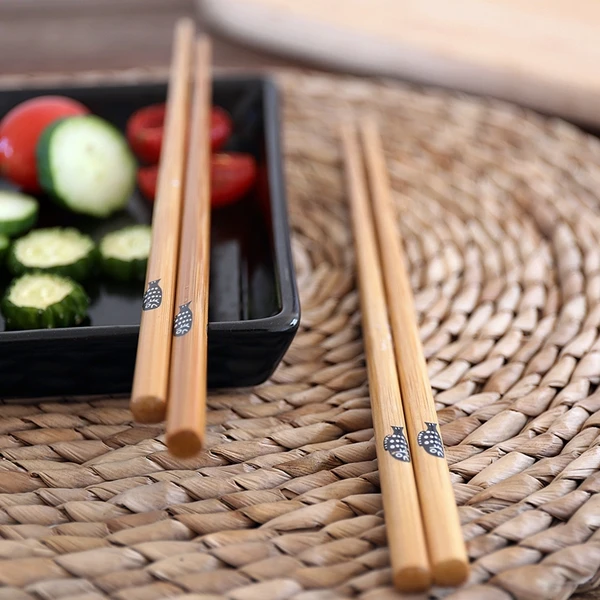Bamboo chopsticks differ from wooden chopsticks
East Asian societies have long been ingrained with the use of chopsticks. Additionally, they are being employed more commonly than ever before all around the world as the acclaim for their cuisines grows.
Numerous other elements have influenced new versions as various nations have customized the most classic chopstick design to fit their cuisines and eating habits. Examples include the availability of substitute materials, the development of industrial techniques, and environmental concerns. There are several alternatives available now, including aspen wood, bamboo, plastic, stainless steel, carbon fiber, acrylic, and glass.
Where do you even start with all the options?
Chopsticks made of bamboo and wood continue to be the most popular kind and have been for a very long time. However, particularly at first glance, it might be challenging to tell the two apart. How do they differ? Which is the best? In order to compare and contrast the advantages and disadvantages of the two most widely used solutions.

Wooden chopsticks: Pros and Cons
Chopsticks made of wood offer several advantages over alternatives like plastic and metal. If you're looking for a more real dining experience, whether you're eating out at an Asian restaurant or creating an Asian-inspired feast at home for family and friends, they're quite conventional, which is excellent. They feel a little bit rougher, which makes it simpler to pick up some things. When set down on plates or bowls, they become substantially quieter as well. Because wood is a poor heat conductor, the heat from the food doesn't reach your hands.
Because it is a natural product, wood is safe to use and has no hazardous or chemical effects. It also retains its strength and solidity.
On the other hand, compared to other materials, wooden chopsticks are more susceptible to mold and infection. They must be thoroughly sterilized, and as they age, they will eventually need to be replaced. In order to protect them from heat and water, they also need a chemical coating. This lessens the chopsticks' position as a wholly natural product even while it increases their endurance and makes it much easier to reuse them.
The environmental effects of excessive wood use have also received attention during the past few decades. It takes a tree about 40 years to grow, and forests are sometimes referred to as the earth's lungs. As a result of the significant role that our trees play in eliminating harmful air pollutants, mass deforestation is an unsustainable process that we should strive to avoid. This leads us to bamboo, a near relative of chopsticks made of wood.
Chopsticks Made of Bamboo: Pros and Cons
Being a member of the grass family, bamboo has a rapid growth rate of up to three meters per year. With regard to mass production, this makes it a highly renewable resource that is far more environmentally friendly than wood.
Bamboo is dense and sturdy, and when properly dried, it has natural resistance to heat and water. There is no need for it to be lacquered during production because its characteristics make it so readily ideal for use in chopsticks, so it also gets points for that. However, this does not imply that dyed or treated bamboo chopsticks are uncommon. Aim to stay away from these as they may contain hazardous pigments that may come off during use. Choose bamboo chopsticks reusable that are true to their natural color as a general guideline.
A minor drawback to keep in mind is that bamboo can occasionally bend when sterilized at high temperatures because the outer peel and core are made of different materials. This is more of a consideration during production and cleaning than a significant problem. Since bacteria are not attracted to bamboo, thorough disinfection is not expected to be essential.
Bamboo or wood?
All things considered, bamboo chopsticks are currently our favorite type, hence we solely use bamboo to produce our chopsticks. They provide outstanding long-term functionality and still maintain the genuine appearance. And we're pleased to inform that our chopsticks are completely eco-friendly. Why not get a set of 4 Ken Hom Bamboo Chopsticks from our online store if you're interested in trying some for yourself?